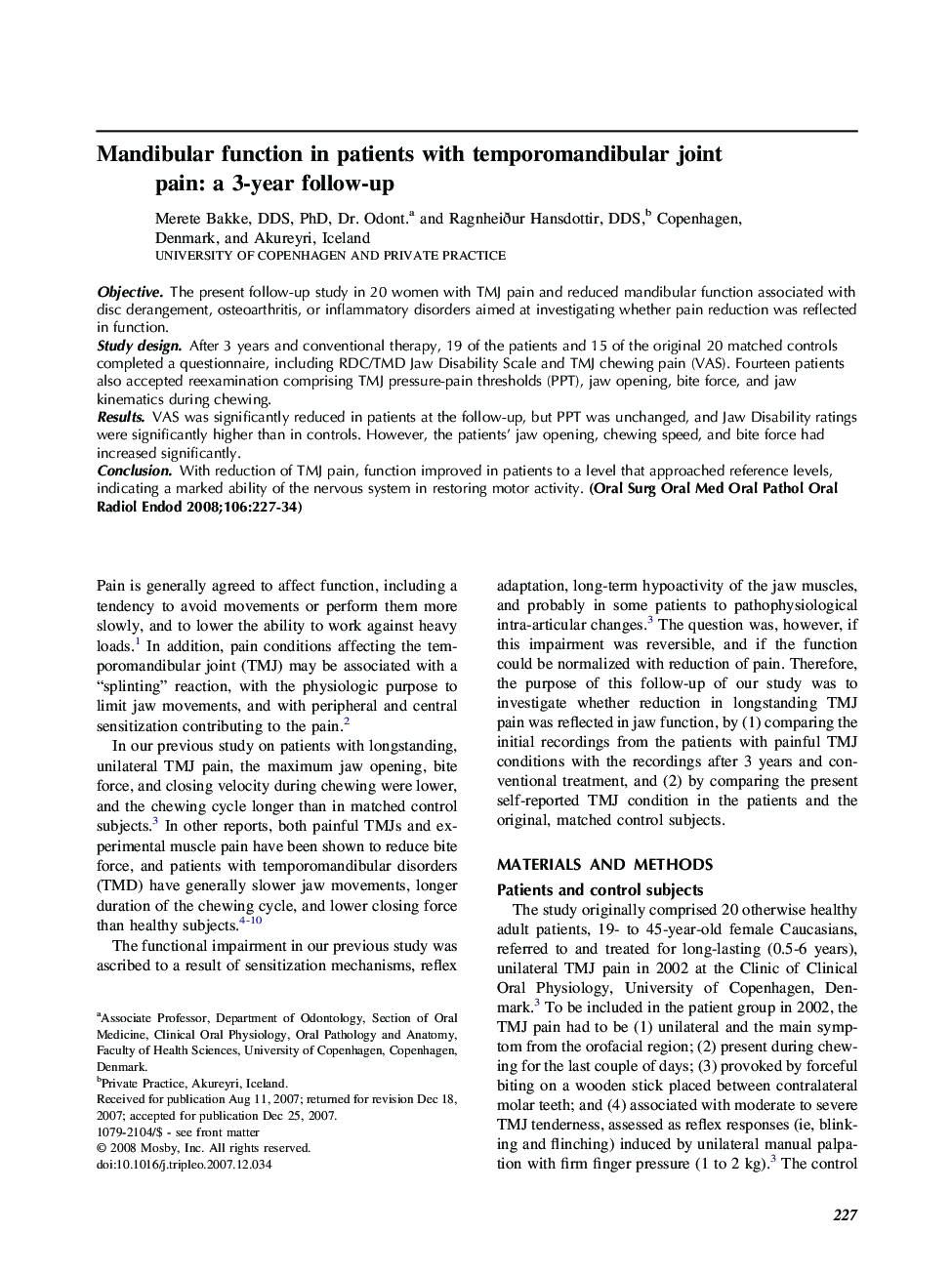| Article ID | Journal | Published Year | Pages | File Type |
|---|---|---|---|---|
| 3168558 | Oral Surgery, Oral Medicine, Oral Pathology, Oral Radiology, and Endodontology | 2008 | 8 Pages |
ObjectiveThe present follow-up study in 20 women with TMJ pain and reduced mandibular function associated with disc derangement, osteoarthritis, or inflammatory disorders aimed at investigating whether pain reduction was reflected in function.Study designAfter 3 years and conventional therapy, 19 of the patients and 15 of the original 20 matched controls completed a questionnaire, including RDC/TMD Jaw Disability Scale and TMJ chewing pain (VAS). Fourteen patients also accepted reexamination comprising TMJ pressure-pain thresholds (PPT), jaw opening, bite force, and jaw kinematics during chewing.ResultsVAS was significantly reduced in patients at the follow-up, but PPT was unchanged, and Jaw Disability ratings were significantly higher than in controls. However, the patients' jaw opening, chewing speed, and bite force had increased significantly.ConclusionWith reduction of TMJ pain, function improved in patients to a level that approached reference levels, indicating a marked ability of the nervous system in restoring motor activity.
